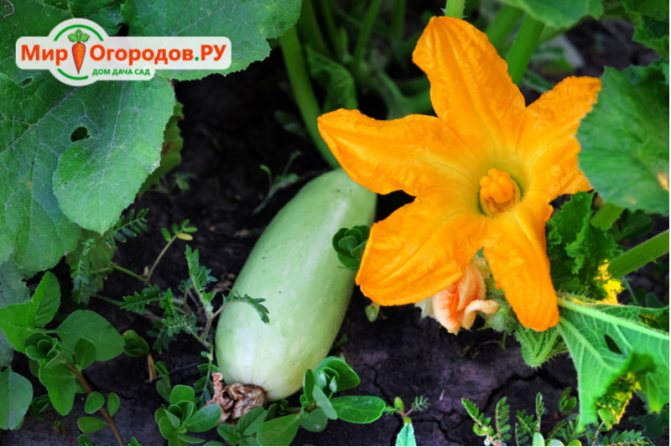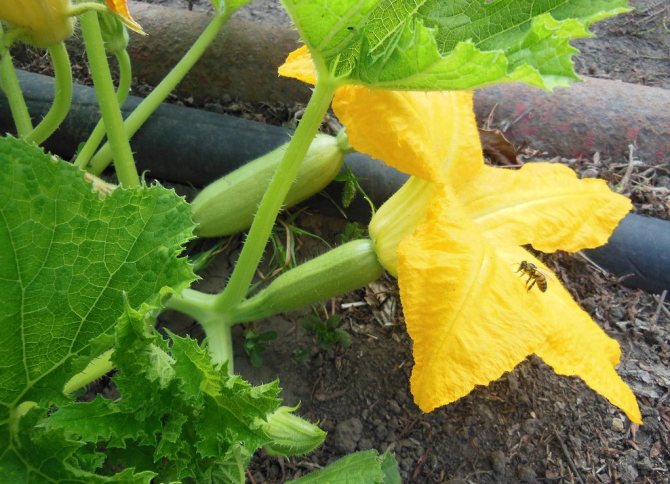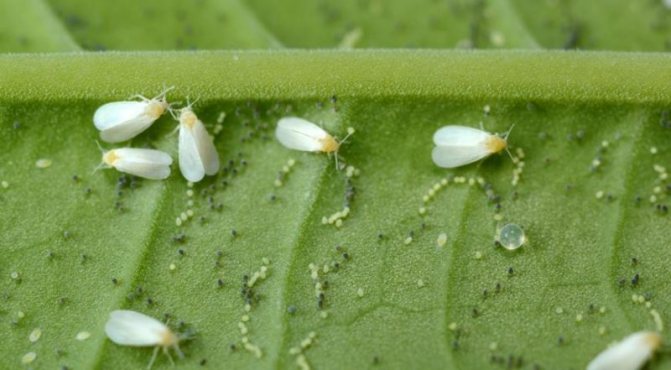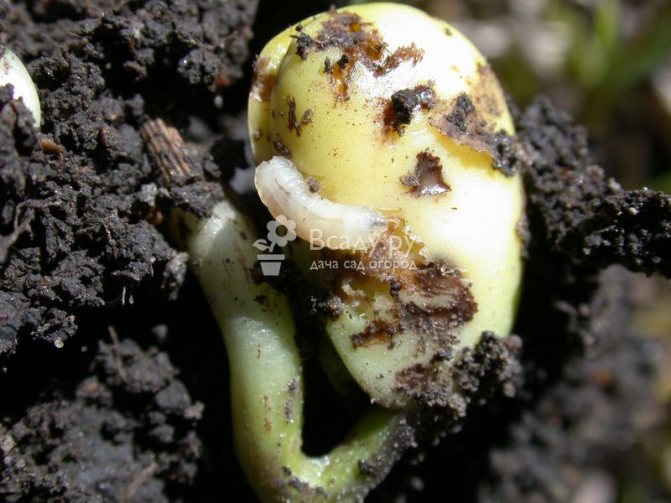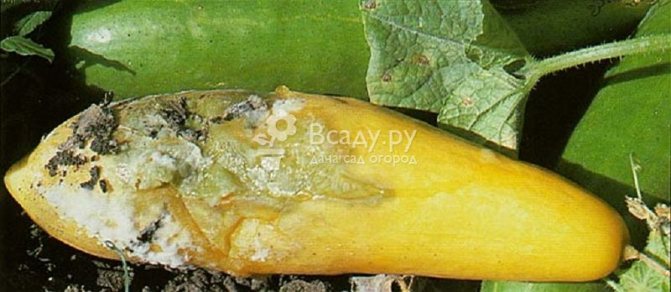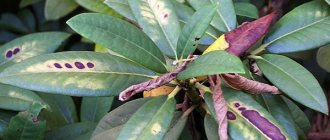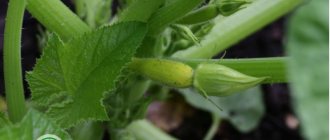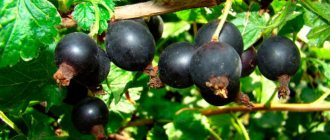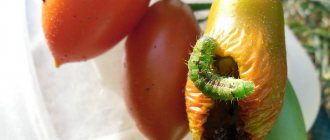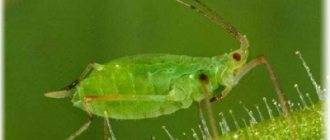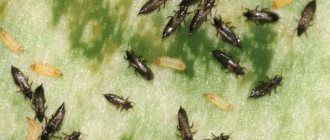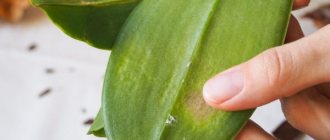Many gardeners are faced with such a problem as zucchini diseases in the open field and the fight against them, the photo will help to identify the problem.
Zucchini get sick with viral or fungal pathologies, they are affected by various pests. An accurate understanding of the problem will help determine the choice of how to deal with it, how to preserve and protect the crop.
Vertex bacteriosis of zucchini
If you are wondering why the zucchini turned yellow, first of all pay attention to the weather and growing conditions of these vegetables. If there is moist soil on the beds, while the air does not circulate well between the plants, then there is a high probability that the zucchini have become ill with apical bacteriosis. With severe damage, the ovaries not only turn yellow, but also rot. The fruits stop developing and become glassy. Some time later, brown spots form on the deformed zucchini.
Fresh articles about garden and vegetable garden
What should be sown in February for seedlings?
Choosing a lamp for indoor plants and for illuminating seedlings
Find out what to sow for seedlings in January: what flowers, vegetables, berries, how to care for seedlings
When the first signs are found in the plants, damaged areas are removed or the bush is torn off the garden bed entirely to prevent the spread of infection. It is possible to fight the disease successfully with preventive measures, which include moderate watering, cleaning the garden from weeds, disinfecting seeds and soil, and maintaining crop rotation.
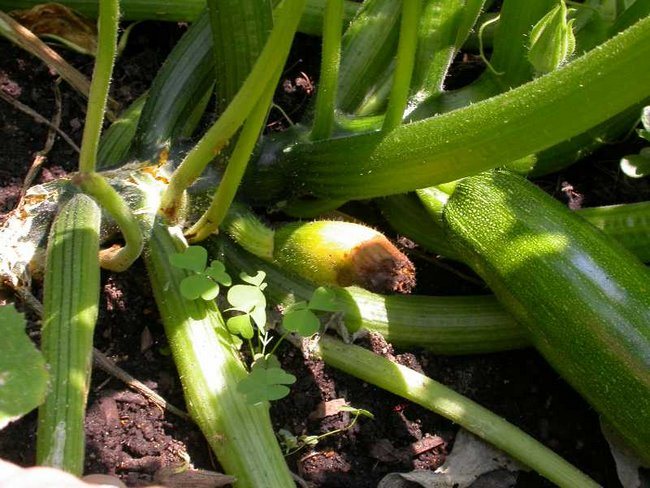
Cucumber mosaic
This disease affects all melons and gourds. The causative agent is the Cucumber mosaic virus, which hibernates in soil and weeds and from there moves to plants. Zucchini leaves are covered with mosaic spots of yellow, white and green, the leaf plate curls, becomes bumpy, internodes are shortened, the crop does not ripen.
Measures for the control of cucumber mosaic in a vegetable marrow
The mosaic virus is capable of carrying aphids, ants, the Colorado potato beetle, so it is necessary to deal with garden pests in a timely manner. Treat plantings with Aktellik or Aktara.
Also, do not forget to dress the seeds before sowing (for example, in a dark pink solution of potassium permanganate), disinfect garden tools, and regularly remove weeds from the beds. When you see the first signs of illness, remove all infected plants.
Now you know what to do if the zucchini leaves turn yellow or turn white, the fruits rot and the aerial part withers. But keep in mind: vegetables can get sick not only in the garden, but also during storage of the crop.
Powdery mildew on zucchini
Powdery mildew or late blight, under this name you can also find this disease, it affects the leaves of zucchini, over time it can spread to the petioles and stem. Small white spots are a symptom of the disease. They tend to increase over time.
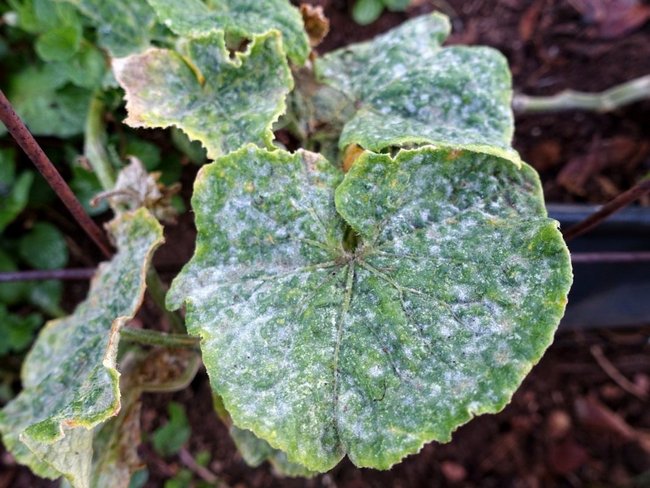

Zucchini viral diseases and control
Considering the viral diseases of zucchini from the photo, mosaics are most often found. There are many varieties and strains of this disease, but the most common is cucumber or green mosaic.
Cucumber mosaic of melons (lat.Cucumber mosaic)
Cucumber mosaic virus infects all types of melons, including squash. The infected plant lags behind in development.The main symptoms of a cucumber mosaic are:
- leaves are covered with mosaic spots of yellow and green;
- deformation and curliness of leaves, the formation of tubercles on them;
- internodes are significantly shortened;
- there is practically no harvest.
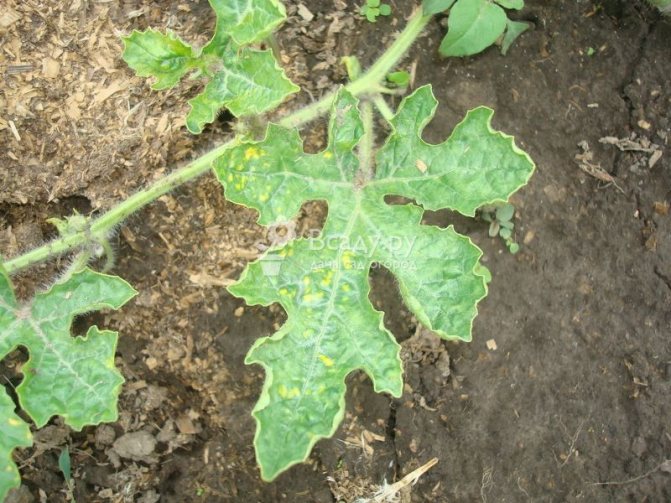

Cucumber mosaic of melons - diseases of squash with a photo
A lot of trouble for summer residents is caused by viral diseases of zucchini and the fight against them, photos of infected plants will help you quickly recognize the virus and start processing plantings. The cause of infection is the appearance of an insect carrier. For example, aphids, ants, Colorado potato beetle. Perennial weeds on the site allow the pathogen to survive the winter cold in the soil.
- regular destruction of weeds along with roots;
- control of aphids and garden ants.
How the zucchini mosaic spreads
It is worth remembering that zucchini seeds cannot be infected with a virus, so the planting material is not a source of infection. The disease affects only the leaves and stems of the plant, the pathogen overwinters on weeds and in the soil, and is carried by insects.
To combat the disease, it is effective to use drugs such as: Aktara and Aktelikt. With their help, you can slow down the development of the disease, or stop at the initial stage.
Among the folk methods of struggle, it is worth highlighting spraying with an infusion of onion peel or garlic. The pungent smell will scare away aphid insects and stop the spread of the disease to neighboring plants.
How to deal with powdery mildew in zucchini
To do this, it is necessary to use the following methods: you need to deal with the destruction of weeds in a timely manner, and after collecting the zucchini, remove all plant residues; in addition, if a plant is damaged by a disease, it must be sprayed with colloidal sulfur (70%), diluted in proportions of 20 g of the product per 10 liters of water; you can get rid of powdery mildew with the help of disubstituted sodium phosphate, 50 g of the product is diluted with 10 liters of water; so that the disease does not spread, it is necessary to cut off the affected stem and leaves or burn them with ground sulfur; infusion of mullein can also be used, for this one kilogram of the product is poured with 3 liters of water and after 3 days the infusion can be used, having previously diluted a liter of the product with 3 liters of water.
Varieties of diseases
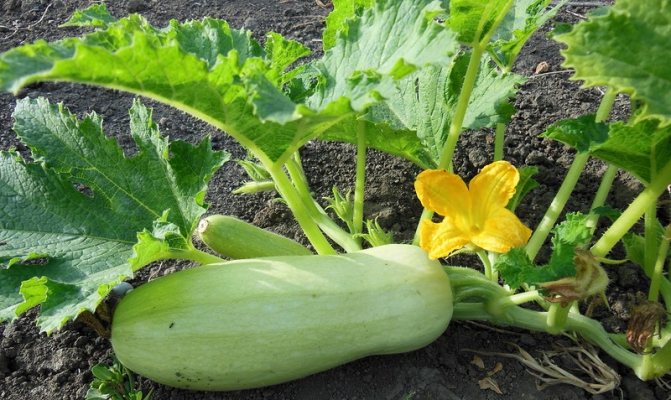

Diseases of squash
Zucchini leaves turn yellow: what to do
Most of the diseases found on squash are classified as fungal. Their causative agent is fungi, which are located mainly on plant residues from past crops and in the upper layers of the soil. Failure to comply with agricultural practices is the most significant reason for their spread. Warm and humid summers, excess nitrogen, thickened plantings also contribute to their development.
Important! Some diseases are spread by viruses that cause a number of pathological changes in the plant, in most cases negative. Zucchini are usually affected by such a viral disease as mosaic. These diseases usually do not respond to treatment, so the affected plantings are destroyed.
Bacterial diseases are provoked by the action of bacteria, which provoke various rot, wilting of foliage and stems. Bacteriosis is a classic example of a similar ailment in squash.
Downy mildew on zucchini
Downy mildew or downy mildew is a fungal disease that is manifested by the appearance of light green spots on the leaves. The spot has no definite shape and increases in size every day. If you examine the reverse side of the leaf, you can identify a gray bloom on it - these are fungal spores. The spots on the leaves dry up as the peronosporosis progresses. The use of fungicides containing copper is an effective means of combating downy mildew. Gardeners often use 1% Bordeaux liquid or Topaz.
Remember
- Treat zucchini diseases immediately. As soon as you notice the first signs of an illness, start fighting, otherwise the disease will spread to all healthy plants in the garden, infecting other crops as well.
- Destroy pests. Insects eat plant leaves, drink their juice, the plant weakens, you get a meager harvest - all these are the reasons for the appearance of dangerous diseases.
- Carry out prevention. To avoid the appearance of pests and diseases: treat the seeds before planting, destroy old leaves and fruits, monitor moisture, remove weeds and fertilize on time.
- Do not plant squash in untreated soil. If pests or diseases were found in the last season, eggs of parasites or bacteria could still remain in the soil. You can plant zucchini, cucumbers or cabbage again in such a place only after 2-3 years.
Anthracnose on zucchini
This disease is fungal in nature. Round spots of light brown color begin to appear on the leaves. The spots on the petioles are more elongated. The fruits are covered with ulcers with pinkish mucus. Soon they frown and start to rot. The rapid development of the disease is facilitated by high humidity in combination with moderately warm weather (from +20 to +25 C). For this reason, the disease most often affects greenhouse plants. The causative agent of the disease hibernates well in the ground on plant debris, as well as on film and arcs. If we neglect crop rotation and disinfection, then almost certainly the disease will fully manifest itself next year.
Fresh articles about garden and vegetable garden
Schisanthus angel wings growing from seed
Tomato "Djalo Santa": variety description photo reviews
Fat woman money tree: home care
When the first signs of anthracnose are found, spray the diseased plants with 1% Bordeaux mixture. Treat greenhouses, film shelters in autumn with bleach (200 g per 10 liters of water). You can also spray plants with a 0.4% suspension of copper oxychloride, 0.3% suspension of zineba (80%), pollinate with ground sulfur (consumption 250 g per hundred square meters).
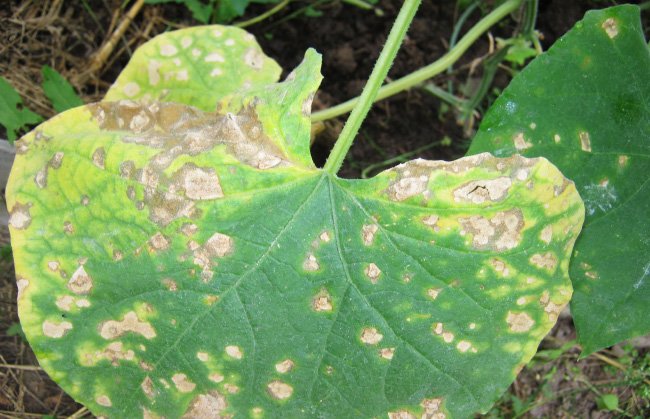

List of squash pests
For vegetable crops, not only the listed diseases are dangerous, but also some pests. Why do they attack the landing and how to get rid of them, we will figure it out further.
Slugs and garden snails
Description... These are gastropods, reaching a length of 2-3 cm to 10 cm. Their body is thick, worm-like and completely covered with mucus. Snails have the same description, only their little body is under the sink. In sunny and dry weather, these pests hide in damp and secluded places, but with the onset of darkness they creep out and attack vegetable crops in the garden.


Signs of defeat... Molluscs gnaw the embryos in the seeds, eat the leaves on the seedlings and gnaw the stems, causing the death of the entire plant. When young zucchini appear, they also eat the pulp in them and even pass through the moves. They not only reduce yields, but also spoil the presentation of vegetables, leaving behind mucus and other secretions.
Control measures... Mechanical is considered a primitive method of fighting shellfish. It involves collecting shellfish by hand or using special traps made from pieces of burlap or plywood and placed around the entire perimeter of the site. Protective grooves up to 30 cm wide can also be dug around the plantings and filled with needles, sand or sawdust to hinder the advancement of pests. Against them, you can also use granules of Metaldehyde (4 g per 1 sq. M), a solution of copper or iron sulfate, lime.
Sprout fly
Description... These are small flies of gray color with a dark longitudinal line on the belly. They reach 3-5 mm in length. Flies lay their eggs under lumps of soil.After 5-10 days, white larvae appear from them, narrowed in front, with denticles at the end of the body and up to 7 mm long, which are capable of destroying all crops in 2 weeks, especially in cold summer conditions. Then the larvae pupate. During the warm season, 2-3 generations of insects may appear.
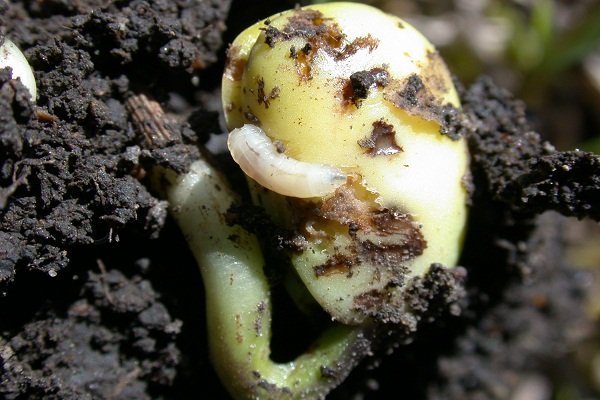

Signs of defeat... Pests can be found on plant seedlings. The larvae destroy the germinating seeds, gnaw through the hypocotal knee and penetrate into the stem. As a result, the young plant may die.
Control measures... If you dig deep into the soil in the fall with the introduction and careful incorporation of manure, then this will be an excellent prevention from flies. In the spring, before the start of the summer season, it is worth adding Karbofos or Fufanon to the soil. Seedlings can be pollinated with wood ash, ground black pepper, or tobacco dust. For watering, a saline solution (200 g per 10 liters of water) is suitable.
Melon aphid
Description... Aphids are a small insect (3 mm) that not only gnaws on leaves, young shoots and buds, but also carries dangerous infections. Female aphids are wingless, have an oval body 1.25-2.1 mm long, and differ in dark green or black. The larvae are yellow or green, with or without wings. The insect reproduces asexually and gives 14-20 generations per season.
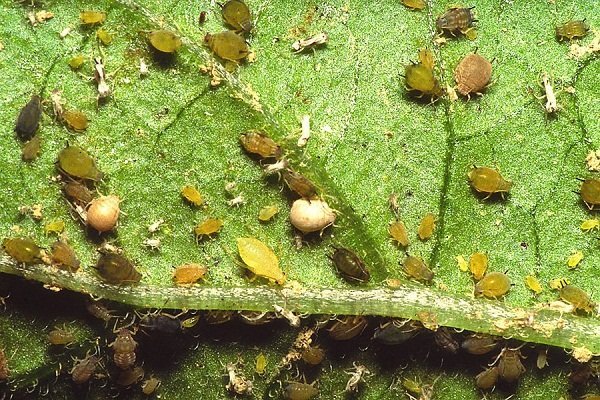

Aphids develop on weeds, on which they hibernate, but with the arrival of spring and the warming of the air to + 12 ° C, they move to pumpkin plants, including zucchini. The optimum temperature for its life is + 16 ... + 22 ° C. Colonies of adult pests and their larvae settle on the lower part of leaves, shoots, ovaries and flowers.
Signs of defeat... The melon aphid eats green tops, as a result of which the shoots, leaves and flowers turn yellow and curl, and then dry up and fall off. With a large invasion of pests, flowers fall off the bush. The plant lags behind in growth, and then dies.
Control measures... In order to prevent the invasion of aphids, the following crops should be planted near the vegetable garden:
- spicy plants (mint, coriander, fennel);
- flowers (lavender, marigolds);
- garlic, onion, mustard, basil.
You can also scare off pests from zucchini with soapy water (100 g per 10 l of water) and dusting with powdered sulfur.
If a small number of pests have already settled on the plant, sparing folk remedies can be used in the fight against them:
- Infusion of tobacco... For its preparation, 1 part of the raw material must be poured with 10 parts of water and left for a day. Dilute the composition with water in a ratio of 1: 3 and use for processing leaves.
- Infusion of yarrow... Within 2 weeks, 1 kg of raw materials should be infused in 10 liters of water, and then used as directed.
Diseased plants can be treated with such an effective microbiological agent as Bitoxibacillin. It should be cooked a few minutes before use. To do this, the substance must be diluted with water from a ratio of 80-100 g per 10 liters of water. You can use the composition for processing the plant every 10 days. Among other drugs, it is also worth highlighting a 10% solution of Karbofos (60 g per 10 liters of water) or Trichlorometaphos-3 (50-100 g per 10 liters of water).
Whitefly
Description... It is a polyphagous small insect of white or slightly yellowish color, the body of which is covered with powdery pollen and has a length of up to 2 mm. Outwardly, it resembles a moth. Adults and larvae infect zucchini in June, settling on the bottom of the leaf plate. They eat leaves and young shoots, sucking out nutritious juices from them and at the same time infecting with various diseases.


Signs of defeat... Insects attack young shoots (leaves) first. They can be easily recognized by the light spots that appear on the surface of the tops. In the process of vital activity, the larvae secrete a sticky mass, which contributes to the tightening of the leaves, prevents them from developing and serves as a favorable environment for the development of fungi.Adult insects eat away at the plant and leave faeces behind, so black spots appear on it. As a result, the affected specimens become discolored, curled, and gradually wither away. At the same time, the buds are deformed, dry and fall off.
Control measures... In order to prevent the death of the plant, it can be sprayed with an infusion of garlic or tobacco (you can add liquid soap) every 3 days. Leaves should be additionally sprayed with settled water. With a strong invasion of whiteflies, the bushes and the soil around them can be watered with insecticide solutions. Such drugs are effective:
- Aktara;
- Actellik;
- Double effect;
- Commander;
- Tanrek;
- Oberon.
After watering, it is worth loosening the soil.
Spider mite
Description... It is a sucking pest with an oval-oblong body 0.3-0.4 mm long. Eggs are spherical, at first they have a greenish transparent color, but then it will stop unclear. Ticks overwinter in groups under plant debris, debris, and even in the surface layer of the soil at a depth of 30-60 mm. Most often appear in June and settle on the underside of pumpkin leaves. The larvae hatch from the eggs within 5-7 days. During the season, ticks give up to 15 generations, and each of them takes 10-28 days to develop.
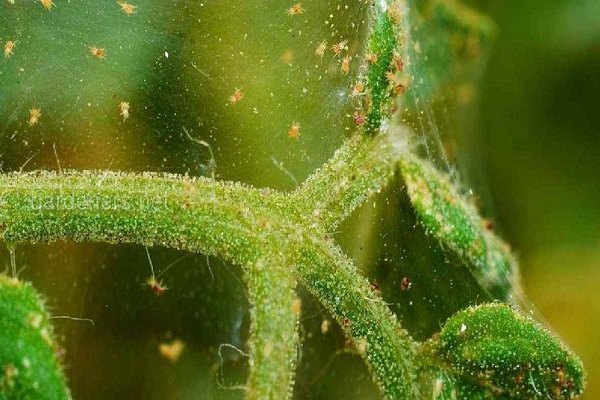

Signs of defeat... Ticks attack the undersides of leaves and leave behind a thin cobweb. In the affected areas, yellow dots appear, which gradually spread to all leaves and lead to their drying out. In severe cases, zucchini die.
Control measures... To get rid of spider mites, you can apply the following measures against them:
- spray the leaves in the heat with an infusion of garlic or onion peels (pour 200 g of raw materials with 10 liters of water and leave for 2 days);
- sprinkle with infusion of black pepper (chop the capsicum, pour 50 g of 10 liters of water) with the addition of liquid soap (1 tbsp. l.) and wood ash (3 tbsp. l.);
The composition must be infused for a day, and then strain and use for processing zucchini every 7-10 days.
- spray with 20% Chloroethanol solution (20 g per 10 l of water) or irrigate with 10% Isofen solution (60 g per 10 l of water);
- spray ground sulfur at the rate of 300 g per 100 sq. m.
To improve the adhesive properties of any solution, you can add 30 g of grated laundry soap to it.
White rot on zucchini
The fungus can cause various putrefactive diseases of zucchini in the open field, it is much easier to identify the type of rot from a photo. With white rot, or sclerotinia, a flocculent white coating first appears on the leaves of the squash with black dots, which eventually spreads to the fruits, antennae, cuttings and stems. They develop white colonies of the fungus - sclerotia, which soon turn black.
Sclerotia fall off and overwinter in the ground, and in spring they are a source of infection. The damaged areas of the plant become covered with mucus, soften and rot. If the base of the stem rots, the plant dies.
An excess of nitrogen in the soil contributes to the infection of plants. Treatment consists in treating the affected areas on squash with crushed activated carbon, wood ash or quicklime.
To combat the pathogen, the following measures are taken:
- Use for irrigation with warm water.
- Root top dressing with a mixture of 10 liters of water, 1 g of zinc sulfate, 2 g of copper sulfate, 10 g of urea.
- In dry and hot weather, the affected plant organs are removed. The sections are sprinkled with crushed coal or washed with a 0.5% solution of copper sulfate.
- As a top dressing, substances containing calcium are used: ground chicken egg shells, wood ash at the rate of 200 g of substance per 1 m². Phosphorus fertilizers are introduced.
- The soil is irrigated with Fitolavin solution, and compost is added to restore the microflora.
Fungal diseases
Copperhead
In the common people, copperhead, or scientifically anthracnose, is a fungal disease of zucchini that can affect all the vegetative organs of a plant.
Vegetables grown in greenhouse and greenhouse conditions have a predisposition to anthracnose.
When cultivating zucchini in the open field, this disease is rarely manifested.
Symptoms
- the appearance of brown oval-shaped fragments on the leaf plates;
- covering of roots, stems and inflorescences with brown specks with a pinkish bloom.
As the fungus develops on the zucchini, the fruits begin to wrinkle and rot, and instead of brown fragments, holes form on the leaves.


When exposed to the fungus, the fruits begin to rot
When anthracnose attacks the root system, the plant cannot be saved.
A number of factors contribute to the appearance and development of the disease:
- excessive watering in the open field in hot weather;
- waterlogged soil and high environmental humidity;
- poor-quality harvesting of vegetation remaining after harvesting.
Treatment and prophylactic measures
Preventive measures allow to avoid the appearance and development of fungal anthracnose:
- thorough cleaning of the sown area in the fall in preparation for the winter season;
- regular destruction of weeds;
- compliance with crop rotation with the correct selection of predecessors and a change in the planting site of related crops every 3-4 years;
- maintaining soil moisture at a moderate level;
- pre-sowing treatment of seeds, for which they often use a raster of boron, copper and manganese with a concentration of 0.2%;
- watering the foliage as the plant grows with biological products (for example, phytosporin) with an interval of 14 days.
When the primary symptoms of anthracnose appear, therapeutic measures are immediately taken: they spray the plants, for which they use Bordeaux liquid (for 10 liters of water, 100 grams of copper sulfate and 100 grams of limestone), colloidal sulfur in the form of a paste with a concentration of 35% (from 40 to 100 grams per 10 l of water) or a polycarbocide in a solution with a concentration of 0.4%.
When vegetables grown in greenhouses and hotbeds are infected with a fungus, the structures are disinfected with bleach, diluting 200 grams in 10 liters of water. Massive defeat of squash plantings is the reason for their destruction.
Sclerotinia
Sclerotinia, or white rot, is a fungal infection of zucchini caused by the phytophage fungus of the same name. Leads to a significant decrease in yield indicators.
Symptoms
- leafy and fruit cuttings, stems and root system are covered with a dense cotton-like bloom of white color, on which fungal spores become visible after a while;
- the affected vegetative parts soften, become covered with a slippery coating and die off.
Favorable factors for emergence and development:
- low temperatures with a simultaneous high moisture content of the soil and the environment;
- thickening of the bushes;
- non-compliance with the basic rules of crop rotation;
- excess nitrogen in the soil.
Treatment and prophylactic measures


The disease requires immediate treatment
In order to prevent this disease in squash, they resort to:
- disinfection of soil by spilling with a weak solution of potassium permanganate;
- calcining the substrate before planting seeds for seedlings;
- regular inspection of plants for the appearance of rot and timely removal of affected areas;
- foliar dressing with urea and copper sulfate (2 grams of copper, 10 grams of urea per 10 liters of water).
When the primary signs of white rot appear, squash is sprayed with Bordeaux liquid with copper sulfate (100 g of limestone, 10 l of water, 100 g of copper sulfate).
To stop the process of reproduction of the fungus, dusting the affected areas with mixed in equal proportions copper sulfate and chalk or crushed coal allows.
Root rot
The causative agents of root rot are pathogenic fungi that can be active for a long time in the soil layers.
The disease leads to a slowdown in the development of the plant: vegetables grow smaller in size, the foliage becomes smaller and becomes yellowish, the ovaries fall off.
Symptoms
- constrictions on the roots;
- discoloration of the root collar, the root itself and the stem to brown with their subsequent decay;
- yellowing and deformation of the lower leaf layer;
- the ruggedness of the vessels on the cut of the stem.
Favorable factors:
- sudden changes in temperature;
- weakened plant immunity;
- watering with water with a low (less than 20 ° C) temperature;
- poor-quality cleaning of weeds;
- exceeding the rate of application of fertilizing complexes.
Treatment and prophylactic measures
As preventive measures:
- comply with the basic requirements of agricultural technology;
- give preference to foliar feeding.
If primary signs of root rot are detected when caring for vegetables:
- pour a layer of soil closer to the stem to activate the process of formation of new roots;
- squash is sprayed with copper-containing agents designed to combat pumpkin root rot.
Plants affected by root rot are removed, and the place of their previous planting is disinfected with copper sulfate.
Powdery mildew
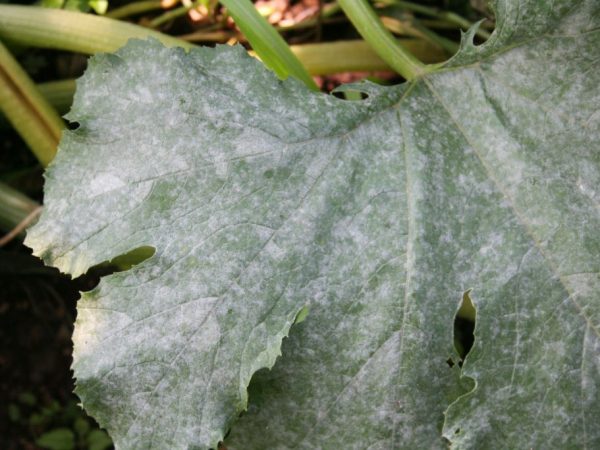

Powdery mildew infects leaves
Powdery mildew has a fungal etiology and mainly affects the foliage of zucchini, but in some cases it is observed on the stem and cuttings.
Symptoms
Whitish spots on the leaf blades, which subsequently increase in diameter, merge into a single whole and lead to the death of the leaf.
A number of factors favor the appearance of powdery mildew:
- waterlogged soil;
- excess nitrogen in the soil;
- poor-quality cleaning of the landing area with the preservation of weeds.
Treatment and prophylactic measures
In the fight against powdery mildew, they use medicinal treatments:
- spraying with colloidal sulfur (20 grams per 10 liters of water);
- ground gray powder (300 g per 100 sq. m of planting area);
- spraying with sodium phosphate (50 grams per 10 liters of water).
Minor damage to foliage by a fungal pathogen is cauterized with mullein infusion (1 kg per 3 liters of water, kept for 3 days, filtered and diluted with 1 liter per 3 liters of water) or sprinkled with ground sulfur.
Peronosporosis
Powdery mildew should be distinguished from fungal downy mildew, or downy mildew, similar in description.
Symptoms
- lesions have an oily character and a yellow tint;
- a gray bloom appears on the lower part of the leaf, containing fungal spores.
The same factors contribute to the appearance and spread of the fungus as with powdery mildew.
Treatment and prophylactic measures
As a preventive measure, pre-planting disinfection of seed material and adherence to agricultural practices are used. Root dressings are replaced with foliar dressings containing zinc, boron and molybdenum.
When primary signs appear, vegetables are sprayed with potassium permanganate in a solution (2 g per 10 l of water), biological products, with a massive lesion - with fungicidal agents with alternating systemic and contact agents with an interval of 10 and 5 days, respectively.
Black mold
The fungal disease black mold is often referred to as foliar burn, affecting all vegetative organs of zucchini. It does not have a strong effect on the yield indicators, however, it leads to a decrease in the presentation of the fruits and spreads quickly, remaining on the seeds, in the soil and technical equipment.
Symptoms
- the appearance of small in diameter specks of rounded forms of light brown color, which subsequently merge with each other, form an extensive necrotic spot; rims are formed around the necrosis;
- over time, the foliage dries up, becomes covered with a cobweb black bloom and falls off.
Promotes the development of black mold:
- sharp temperature drops at night and during the day;
- thickening of landings.
Treatment and prophylactic measures


The disease can kill the plant
The main preventive measure against black mold is the pre-planting treatment of seed material and decontamination of the soil with a thorough cleaning of weeds.
To stop the spread of fungal disease, treatment with Bordeaux liquid with a concentration of 1% and copper oxychloride with a concentration of 0.5% allow.
Fusarium
Fusarium wilt, or dry rot, is caused by a fungus, through the release of toxic substances, damaging the vessels of the plant, blocking its supply of food and leading to death.
It is focal in nature, penetrating through the soil and existing wounds on the plant.
Symptoms
- withered foliage and stems;
- diseased specimens do not bloom and do not bear fruit;
- yellowed foliage falls off;
- the roots darken.
Promotes the appearance of fusarium:
- weed vegetation;
- thickening of landings;
- non-compliance with crop rotation;
- an excess of chlorine in the soil;
- weak resistance of vegetable crops.
Treatment and prophylactic measures
The fight against fusarium in the rarest cases leads to a positive result and a complete recovery of zucchini, therefore it is necessary to prevent this disease:
- disinfect the soil with green manure;
- hardening of seed material and seedlings;
- zucchini is sprayed with biological products.
Cladosporium
Cladosporiosis, which has a fungal etiology, is rarely found in zucchini. Primary signs are characteristic for the middle of the growing season, when flowering and ovary formation begin.
Excessively high (90-95%) humidity favors the development of cladosporium.
Symptoms


High humidity can cause disease
- yellow spots of different sizes and shapes;
- light bloom on the underside of the leaf, which turns brown over time.
Treatment and prophylactic measures
When combating brown spotting, the main measure is correctly selected agricultural technology.
When treating affected plants, squash is treated with:
- chloride iodine (30 grams of potassium, 40 drops of iodine per 10 liters of water)
- milk whey (1 liter per 10 liters of water);
- garlic tincture (1 clove per 10 liters).
Whitefly on zucchini
Whitefly is polyphagous, it can harm many cultivated plants in the open field, including zucchini. An effective remedy in the fight against insects is the drug "Confidor". The consumption of the drug is very small - only 1 ml per 10 liters of water, and this solution is enough to treat 100 meters of the site. Phosbecid is also very effective for this problem, which is also very economical to use - 5 ml of the drug is enough for 5 liters of water, and this solution is enough to treat 50 meters of the affected area. The easiest and safest way is to rinse the insects off the plant with a stream of water and then loosen the soil underneath.
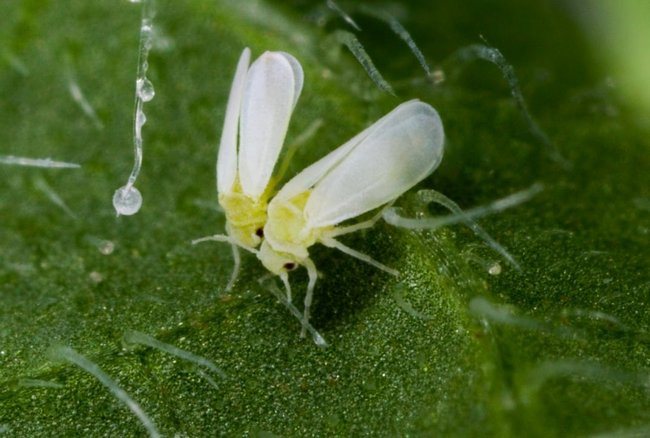

Parasites
In addition to all existing viruses and diseases, there are also parasites that can cause irreparable harm to plants. Getting rid of them can be extremely difficult, so all preventive measures should be taken care of before the plant is attacked. Consider the most common and dangerous pests.
Spider mite
This insect is considered extremely dangerous and harmful to almost all crops, and if it appears on the site, you should immediately sound the alarm. The body of this mite has an oval shape with a length of 0.3 to 0.4 millimeters. Eggs of mites are spherical, green or transparent.
These parasites live on the underside of the leaves, where they weave their webs. Initially, small white dots form on the affected leaves, and then the leaf turns completely yellow and dries up. Complete death of the plant often occurs. These mites feed on the cell sap of pumpkin or cucumber plants, which leads to the fall of flowers and leaves.
The appearance of these insects occurs at the end of June. During this period, they breed stubbornly.They hibernate at the very end of summer. It is carried out under fallen leaves, in various crevices, greenhouse frames or in the upper soil layer.
To combat this pest, you will need an onion solution. This method is referred to as folk remedies. To prepare the solution, you need ten liters of water, one glass of carefully chopped onions, one tablespoon of chopped pepper, two tablespoons of wood ash and one tablespoon of liquid soap. All this is thoroughly stirred and the plants are sprayed two or three times. The interval between spraying should be at least five days.
A good way is also treatment with a solution of the drug "Iskra". It is necessary to dilute one Iskra tablet in a ten-liter bucket of warm water. One liter of solution is used per ten meters of the site. The drug Confidor can serve as a substitute for Iskra. One milliliter of the product is diluted in ten liters of water.
Melon aphid
This parasite is omnivorous and very often damages zucchini. The shape of the body is oval, the color is green. The size of the insect is about one and a half millimeters. The larvae of this aphid can be green or yellow.
Reproduction is carried out in the spring, when the air temperature reaches 12 degrees. Affected leaves begin to curl up and then fall off. Plant growth slows down.
At the first appearance of this pest in the garden, control measures should be taken immediately. This can be spraying with karbofos, for example. It is also very important to remove weeds, since it is on them that aphids develop in the summer.
The affected areas of the plant must be burned. Spraying plants with ordinary water, as well as pollination with crushed sulfur, will not interfere. If there are not very many aphids in the garden, then you can do with washing the plants with soapy water.
Whitefly
This pest, like the previous aphid, is omnivorous. It brings special harm to tomatoes, zucchini and pumpkins. The whitefly is most active in the second half of summer. It is usually located on the underside of the sheet.
The most powerful way to combat this insect is the use of the drug "Confidor". It is necessary to dilute one milliliter of the drug in ten liters of water. Many people use a simple flushing of the insect from the leaves, and then loosen the soil.
Sprout fly
Such a fly is dangerous because it damages pumpkin and squash crops. It is rather small in size - about six millimeters, there is a gray line on the dark abdomen. Pupae of these parasites spend the winter in the soil. In spring, the fly flies out and lays its eggs in late May. The fight is carried out by loosening the soil, as well as the destruction of all weeds and plant debris.
Melon aphids on zucchini
The melon aphid is most often harmful in July-August, multiplying rapidly in moderately humid and warm weather. Damages shoots, flowers, ovaries, the underside of leaves, causing them to shrink and wilt, retards plant growth.
Fresh articles about garden and vegetable garden
Planting corn at their summer cottage
Planting potatoes with seeds for seedlings
Tomatoes without pinching for greenhouses
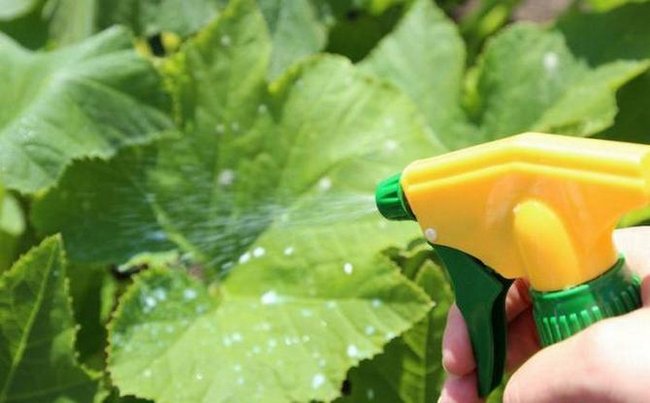

Prevention of zucchini from diseases
The prevention of all fungal, bacterial or viral diseases of zucchini is the same, so we will talk about it first. So, the following actions will help to minimize the risk of catching the disease:
- observe the crop rotation, zucchini in one place can be grown every 3 years;
- monitor the condition of the soil, use fertilizers wisely, a lack or excess of elements can become a good environment for the development of pathogenic fungi;
- water zucchini in moderation, excessive air and soil moisture are ideal conditions for all diseases;
- pathogens live and winter on plant debris and seeds. Remove all parts of the infected plants in a timely manner and destroy them away from the vegetable garden.If you have to remove the bush completely, grab a clod of earth;
- pre-planting preparation is mandatory in the prevention of any diseases - seed dressing in biofungicides. Examine the seedlings carefully;
- do not thicken the planting;
- special attention should be paid to zucchini grown in greenhouses and greenhouses due to the special, humid microclimate of such premises. Watch out for plantings and don't forget about airing. If the disease has cleared up on greenhouse beds, disinfection of the entire room will be required, and sometimes soil replacement.
Other problems
There are other factors that negatively affect the growth, development and fruiting of zucchini:
- rotting of the ovaries. This disease affects young vegetable ovaries, and if you do not take medical measures in time, you risk being left without a crop. The causative agent of the disease is putrefactive bacteria, which multiply rapidly. Therefore, all infected plants must be removed and burned in order to avoid infection of healthy bushes;
- yellowing of foliage. One of the reasons for this is insufficient watering. Therefore, it should be adjusted and carried out as the top layer of the earth dries up. If the zucchini still turn yellow after this, it is possible that the reason is a lack of nutrients. In this case, the bushes should be fed with ready-made fertilizer - urea, slurry or humus.
Zucchini has many diseases and pests, but their occurrence can be easily prevented. The main thing is to comply with all the rules of agricultural culture, to provide it with proper care and competent planting.


